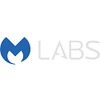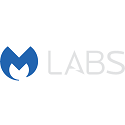Operational Security Best Practices For Social Media
Building a firm, clear policy on disclosures online can provide a flexible, adaptive response that will protect proprietary data from winding up in a public leak.

In recent years, we’ve seen the pace of database breaches and the subsequent distribution of Personally Identifiable Information (PII) accelerate to a breakneck pace, causing significant financial and personal damage to the individuals impacted. But what often goes unconsidered is the organizational damage that the loss of even a single email address can cause.
One carefully considered stolen pair of credentials can offer a jumping off point for a phishing campaign that appears to come from a trusted source, an intelligence source that affords an attacker targeting data for subsequent action, or a pivot point to access other accounts that may use the same password. In fact, attackers will commonly comb through leaked databases for high value targets and resell secondary lists to those looking to use the accounts before a password reset. A common defense against these sort of scenarios is practicing good organizational social media operational security – OPSEC - principally by keeping company data off LinkedIn, Facebook, Reddit, and the like.
OPSEC on social media demands good communication between first-line managers, legal policy, and your Security Operations Center (SOC). Legally, you can’t forbid your employees from using LinkedIn, but you can bar them from disclosing company assets publically, such as an organizational email. First-line managers are responsible for implementing legal policies, but more importantly – these managers can communicate back to the OpSec team when business needs are forcing employees to circumvent security policies.
Much more common than the malicious insider threat is the employee who can’t access data they need on the road, and decides to forward company email to a webmail service. Another dangerous scenario is the employee who is required to disclose their company email to third parties, but doesn’t have a separate account for sensitive data.
SOC: Your OPSEC Of Last Resort
There are generally simple, easy fixes for these issues that tend not to be implemented due to poor communication with first-line managers. And there will always be individuals with exceptionally poor judgment, for example, those who would register for ashleymadison.com with a company email. Bottom line, making sure security policies are aligned with business needs is a low cost measure that decision makers should be doing as a matter of course.
The SOC affords your organization with OPSEC of last resort. If a SOC tech sees company information disclosed in a public space, something has already gone wrong. That said, a simple crawler set to look for a defined keyword or domain list on sites like Reddit or Facebook can find leaked PII fast, increasing the odds that a takedown will be more effective.
A Tier II SOC tech can triage a leak after the fact by pinpointing the precise point of egress. Asking for passive monitoring of PII can afford an additional layer of security for situations when policy is not sufficient. Brand Protection services will also do this as part of a vendor relationship, although typically at significant cost.
As with most cybersecurity issues, protecting company information on social media boils down to issues of communication. Building firm, clear policy on disclosures online, as well as providing channels for feedback to filter upwards, can provide a flexible, adaptive response that will protect proprietary data from winding up in a public leak.
About the Author
You May Also Like




